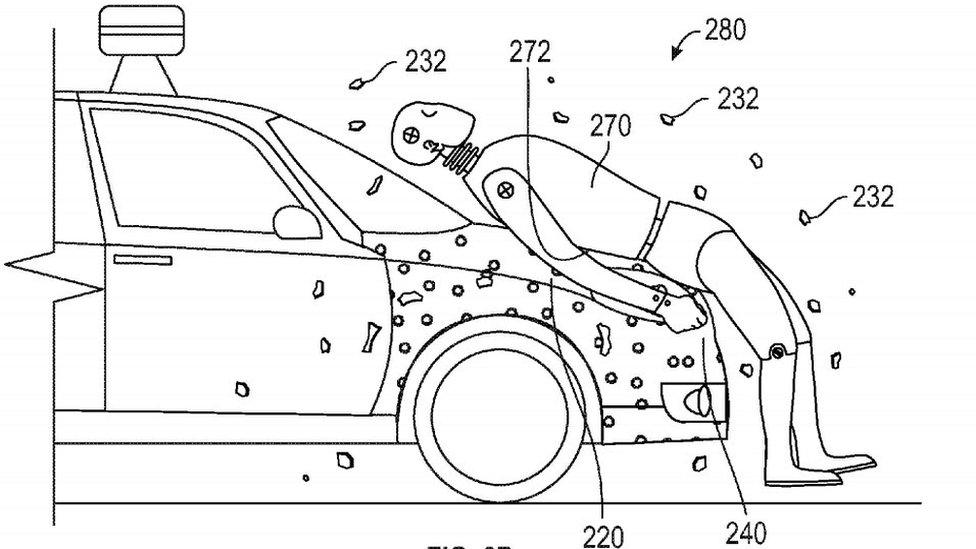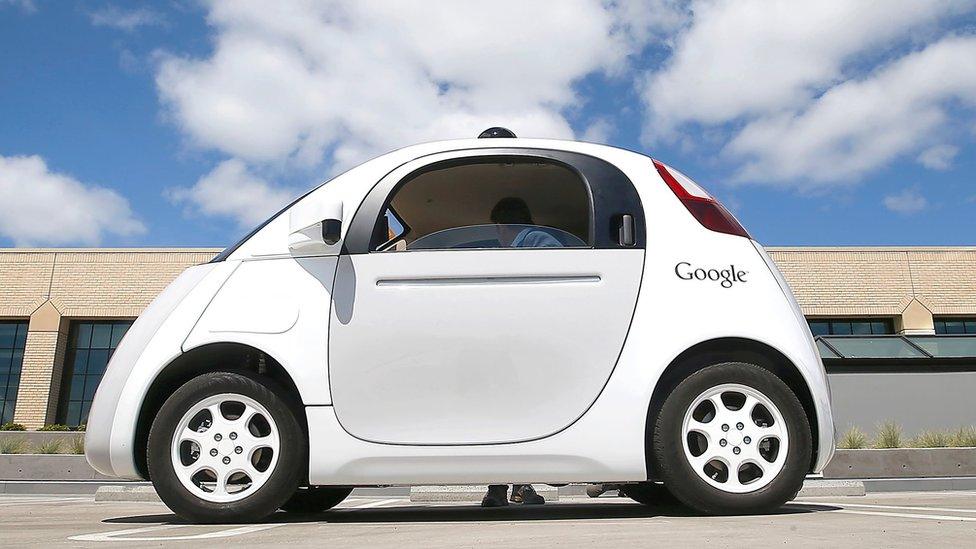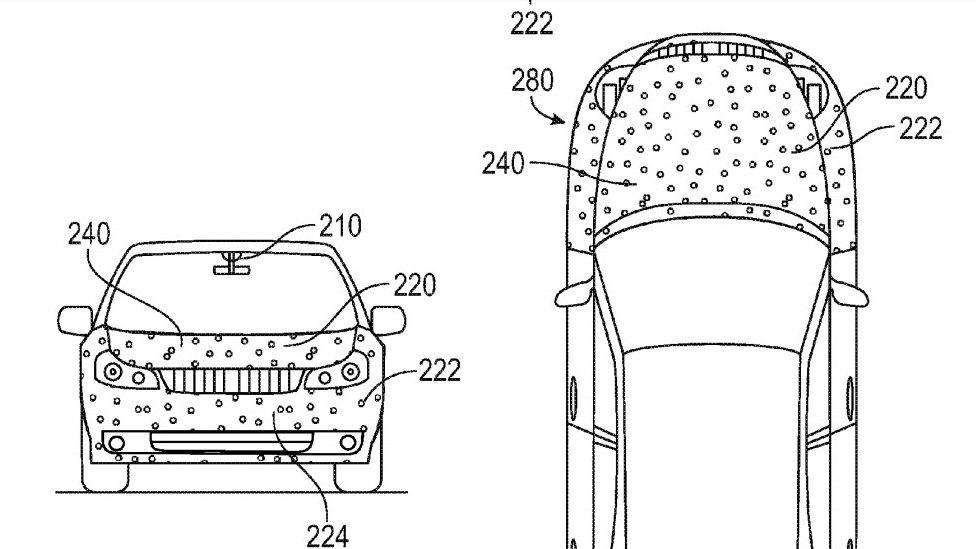Google patents 'sticky car' to reduce crash injuries
- Published

Struck pedestrians would be glued to the car
Google has patented a sticky coating for driverless cars that could reduce damage done to pedestrians in the event of a collision.
People struck by the vehicle would become glued to its bonnet, rather than being thrown off and further injured.
One transport safety professor said the concept could reduce injuries sustained in a pedestrian collision.
Google did not say whether it intended to implement the idea in its driverless vehicles.
"It does have some merit to it," said Andrew Morris, Professor of Human Factors in Transport Safety at Loughborough University.

Google has been testing its autonomous cars in California
"When pedestrian accidents happen, often the person is thrown up onto the bonnet and there may be injuries from that contact, but sometimes there are not.
"But when a driver brakes in a collision, a totally natural reaction, the pedestrian is thrown onto the ground and you can get injuries from that contact."
Google's patent, external explained that the adhesive layer would be hidden under a protective coating, to ensure it did not gather debris during journeys.
"Upon the initial impact between the colliding object and the vehicle, the coating is broken, exposing the adhesive layer," the patent document said.
Google has been testing driverless cars since 2009, and the company says its vehicles have driven more than a million miles autonomously.

The sticky coating would be hidden by a protective layer
While there have been some minor collisions along the way, the most serious involving a bus, the company's monthly reports suggest a majority of incidents are the fault of human drivers in other vehicles.
Prof Morris said it remained to be seen whether the idea would work in practice.
"Whether they could realistically make a car that has the right material in it and works reliably, we can't categorically say that," he told the BBC.
Kevin Clinton, head of road safety at the Royal Society for the Prevention of Accidents, said: "As well as developing new technology that prevents pedestrians from being hit in the first place, it's also crucial to develop ways of reducing the severity of injuries suffered if a pedestrian is knocked over."
"This idea is a fascinating example of just how far vehicle technology is changing," he told the BBC.
"It will obviously need to be developed and tested to ensure that it works reliably and doesn't cause any unintended consequences."
Nick Reed, academy director at the Transport Research Lab (TRL), agreed that the idea made sense in principle.
"The idea behind Google's patent is not new - others, including TRL, have discussed and presented on the idea of 'capturing' pedestrians after they are impacted," he told the BBC.
"In 1974, following initial research into the future of car safety technology by British Leyland, five prototypes were developed. This featured a spring-loaded pedestrian-catching cage which was activated in the event of an impact and raised to prevent the accident victim from sliding down or being thrown forward.
"The use of a sticky layer could be part of a number of methods used to help manage dynamic movements of pedestrians as a result of a collision."
- Published29 February 2016